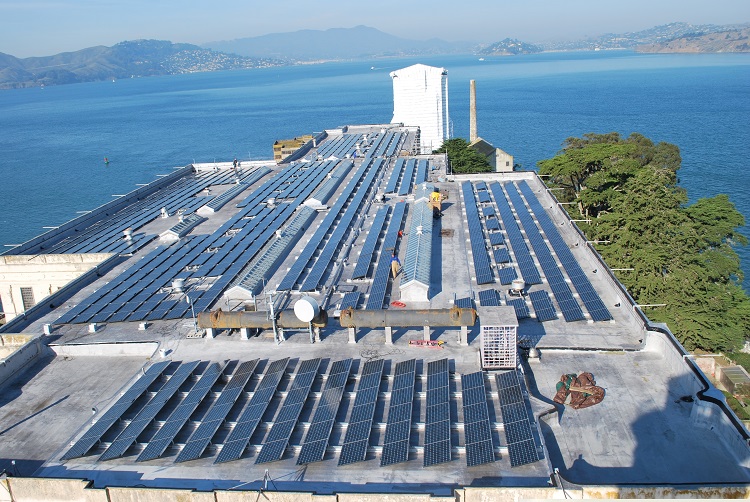REopt Reveals Opportunities To Boost PV System Efficiencies, Halve Fuel Costs at Alcatraz

A REopt analysis demonstrated the impacts of planned upgrades to the hybrid solar-diesel microgrid system at Alcatraz Island. Photo courtesy of the National Park Service, NREL 21415
The National Park Service (NPS) and NREL used the REopt® model to evaluate opportunities to reduce diesel fuel consumption and energy costs at Alcatraz Island in San Francisco Bay. NPS installed a photovoltaic (PV)-diesel-battery off-grid system in 2012 to reduce fuel use. However, the system did not save as much fuel as expected. Generators were charging the battery too often, limiting the storage capacity of excess PV. NREL performed a REopt analysis to optimize the dispatch strategy of the existing systems. The results demonstrated that the refined operating strategy would increase use of the existing PV system (reducing curtailment from 30% to 4%), reduce annual fuel consumption and cost by about 50% or 15,000 gallons per year, and limit battery wear and tear. This would save $115,000 per year in diesel costs and battery wear.
NREL is now working with NPS and Princeton Power to implement changes to the operating strategy and measure savings.
Related Stories
NREL poster: Optimizing Storage and Renewable Energy Systems with REopt
NREL feature article: NREL Helps the National Park Service Celebrate Its Birthday with Clean Energy
NREL poster: REopt Improves the Operations of Alcatraz’s Solar PV-Battery-Diesel Hybrid System
Sponsors
Department of Energy Federal Energy Management Program
Key Partners
Hal Hayes Construction
National Park Service
Princeton Power Systems
Contact
Share